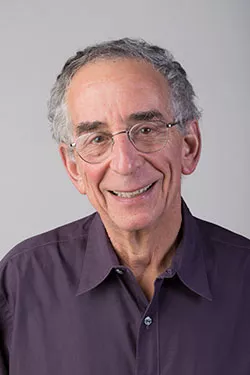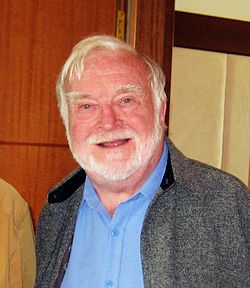The #CareerX0 journey has always been about the evolution of self — from awakening to breaking, from rebuilding to redesigning. Each phase mirrors a human truth: awareness sparks change, discomfort fuels it, and consistent effort makes it real. In Part 1 (The Awakening) we sensed that first spark, that uneasy whisper that perhaps the story you’re living isn’t the one you want. In Part 2 (The Breaking Point) that whisper erupted into a roar, forcing you to confront what no longer fits. Then in Part 3 (The Unseen Work) you turned inward and downwards, the quiet rebuild in the dark, the patience, the micro-wins, the discipline.
But what happens after clarity? When the fog lifts, and you’re standing with choices, all seemingly good how do you decide which one is yours? Somewhere between burnout and breakthrough lies this moment of stillness. You’ve done the unseen work, you’ve rewired your habits, steadied your focus, rebuilt your resilience. But here’s the hard truth no one really talks about: clarity by itself hands you only a map, not a vehicle. The deeper question is: will you move, in which direction, and with what momentum?
The deeper question is: will you move, in which direction, and with what momentum?
Remember: the unseen work wasn’t just healing, it was methodical preparation. The muscles built through patience, self-discipline and micro-wins are the power behind the next leap. Welcome to Part 4 of #CareerX0.
The Paradox of Choice
You’d think having more options would feel liberating. It turns out it’s exhausting. 
Psychologist Barry Schwartz (pictured) dubbed this the Paradox of Choice, the more options we have, the more anxious and paralysed we become. A meta-analysis of 50 decision-making studies confirms that too many choices generate cognitive overload, leading to regret or indecision. In fact, the Future of Jobs Report 2025 by the World Economic Forum notes that nearly 39 % of workers expect at least that much of their skill set to change by 2030, intensifying the pressure to choose paths that feel “future-proof.”
Your brain doesn’t like uncertainty, the prefrontal cortex (your rational planner) craves clarity and predictability. But when flooded with options, the amygdala (your emotional alarm) leaps in, screaming “Don’t mess this up!” The result? Analysis paralysis or, in neuroscience terms, decision fatigue, where even choosing lunch feels like solving an existential riddle.
So if you feel “confused”, you’re not broken. Your brain is simply trying to conserve energy. The real goal is to rapidly filter down to your ideal few paths. We’ve been here before, during your breaking point when exhaustion and possibility blurred. This time, the task isn’t just to survive the chaos, it’s to shape it into focus. You’re not indecisive, you’re navigating a world where opportunity moves faster than identity. That’s why filtering, not fearing, your choices is the new super-skill.
Pressure to Intention
Pressure says “I should.” Intention says “I choose.” In career psychology, this shift marks the difference between extrinsic motivation (doing what looks right) and intrinsic motivation (doing what feels right). Research via Edward Deci and Richard Ryan’s Self-Determination Theory shows that acting from intrinsic motives — autonomy, mastery, purpose — leads to better performance, greater resilience and deeper fulfilment.

Neuroscience adds to this: when your actions align with intrinsic goals, your ventral striatum (the brain’s reward centre) lights up. Dopamine flows more sustainably, you don’t simply pursue results, you enjoy the journey.
Take the example of professionals retraining mid-career: LinkedIn’s 2024 Workforce Learning Report shows that employees who upskill in alignment with intrinsic goals are 32 % more likely to report job satisfaction than those driven by external rewards. The data is clear: when your “why” drives your “what,” engagement follows. So before you pick double-down on your path, ask: Is this choice coming from intention or pressure? If it feels like relief, it’s probably pressure. If it feels like energy, it’s intention. Recall your awakening: the moment you first questioned the “shoulds.” Choosing with intention is a return to that truth, but this time armed with data, discipline and self-belief.
Design Your Career
In learning science, progress isn’t found by choosing the perfect plan, it’s built from smarter experiments.  Cognitive psychologist Carol Dweck’s (pictured) research on the growth mindset shows that high performers seek useful feedback, not final answers.
Cognitive psychologist Carol Dweck’s (pictured) research on the growth mindset shows that high performers seek useful feedback, not final answers.
Your career? Think of it as a laboratory. Every role, project or pivot becomes an experiment:
- What hypothesis am I testing? (e.g. “Do I enjoy leading versus doing?”)
- What feedback will tell me I’m on track?
- What data (performance results, emotional signals, personal satisfaction) will guide my next step?
This model transforms your career from a linear “ladder” into a dynamic learning loop: observe → act → reflect → adjust. That’s how mastery builds, not from certainty, but from curiosity repeated.
This model transforms your career from a linear “ladder” into a dynamic learning loop: observe → act → reflect → adjust.
In short: Your career isn’t a staircase. It’s a lab. The unseen work taught you patience, this phase teaches you direction. The Future of Jobs 2025 report also forecasts analytical thinking, resilience, and self-management as the top three in-demand skills globally. Instead of asking “What job should I do?”, ask “What kind of problems do I want to solve repeatedly?” Careers will increasingly be built around problem clusters, not job titles.
Neuroscience of Alignment
Why does “flow” feel so right? Well, because it is right, at the neural level.  Neuroscientist Mihaly Csikszentmihalyi found that when skills match by challenge level, the brain enters a state of deep absorption: flow. Neurotransmitters (dopamine, norepinephrine, serotonin) align, focus deepens, and the inner critic hushes.
Neuroscientist Mihaly Csikszentmihalyi found that when skills match by challenge level, the brain enters a state of deep absorption: flow. Neurotransmitters (dopamine, norepinephrine, serotonin) align, focus deepens, and the inner critic hushes.
Flow isn’t accidental, it’s neural alignment. And you can train it. A study published in Frontiers in Human Neuroscience showed that deliberately designing “flow moments” in the week (via engaging tasks, hobbies or creative work) led to measurable drops in cortisol and improved wellbeing.
According to Gallup’s State of the Global Workplace 2024 report, only 23 % of employees feel engaged in their work. Flow is the antidote to that disengagement, it’s the brain’s natural reward for doing what feels meaningful. If you’ve ever lost track of time while designing, mentoring, or building, your brain was quietly signalling, do more of this. When choosing your next career step, don’t only ask “What’s next?” Ask: “Where do I lose track of time?” Flow is your internal compass, science’s version of intuition. And you’ve been prepping for it since Part 1, aligning outer work with inner wiring until they rhyme.
Choosing Career That Chooses You
The best career path isn’t only one you pick, it’s one that fits you back. Think of it as a feedback loop between your choices and your character.
- Make decisions aligned to your values (not trends) → you gain coherence
- Act from curiosity (not comparison) → you regain momentum
- Make tiny intentional decisions daily → you regain agency
Consider this: a product manager we know named Sonia realised her real strength wasn’t managing timelines but translating ideas between design and engineering. She reframed her role around communication and within a year, led a cross-functional team. She didn’t switch careers, she just re-aligned it. That’s what it means to choose a path that chooses you back. As mentioned in previous parts, research on grit reminds us: purpose isn’t discovered, it’s developed. It develops through consistency in the direction of your values, not through constant reinvention. So don’t wait for clarity to come from the outside. Build it through deliberate, repeatable acts that echo your inner truth.
The World Economic Forum predicts that 86 % of organisations will integrate AI and data analytics into everyday workflows by 2030. This means your next career leap isn’t about chasing the next title, it’s about mastering the cognitive flexibility to work with intelligent systems, not against them. The clearer you are about your strengths, the easier it is to adapt to an environment that rewards learning agility above all else.
Therefore, your “choice of path” isn’t only personal, it’s also strategic. The future rewards those who align purpose with adaptability, curiosity with competence, and values with skills. The framework you build now will let you ride the waves of change instead of being swept by them.
Try This Now🧭 Grab a notebook and spend 15 minutes this week on these questions:
- Audit your drivers: Write down 3 career decisions made from pressure and 3 from intention. What patterns do you notice?
- Run a micro-experiment: In the next 30 days, try one small challenge that aligns with curiosity — a skill sprint, side project, or mentorship session.
- Map your flow: Track which activities make time disappear. Could they become 30 % of your work week?
- Check your future-proof skills: From the Future of Jobs 2025 list, rate yourself on top 10 core skills. Where’s your biggest growth gap?
Four chapters, one evolution. From awakening to breaking, from rebuilding to choosing. Each phase traded noise for nuance, reaction for reflection, confusion for clarity.
Clarity isn’t found in silence, it’s forged in motion. Choosing your path isn’t about predicting the future, it’s about aligning your energy with what makes you come alive, again and again. In a world of accelerating change, the real advantage is self-awareness plus adaptability.
So as we move into the next chapter of #CareerX0 exploring the core skills of 2025 and how these will future-proof careers, take this time to reflect, experiment, and keep showing up. The work you do now, when no one else is watching, becomes the proof of what you’ll be known for later. This isn’t just a framework, it’s a philosophy: awaken, break, build, choose. Careers aren’t found, they’re crafted, one conscious, intentional decision at a time.